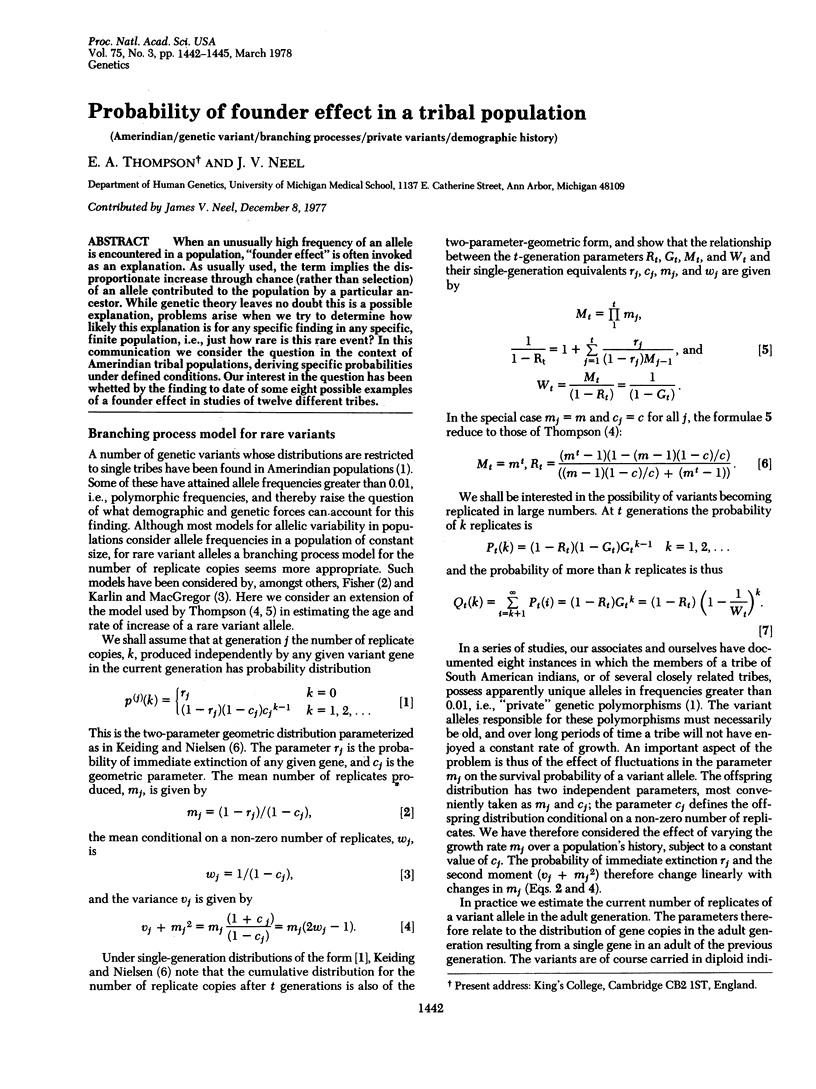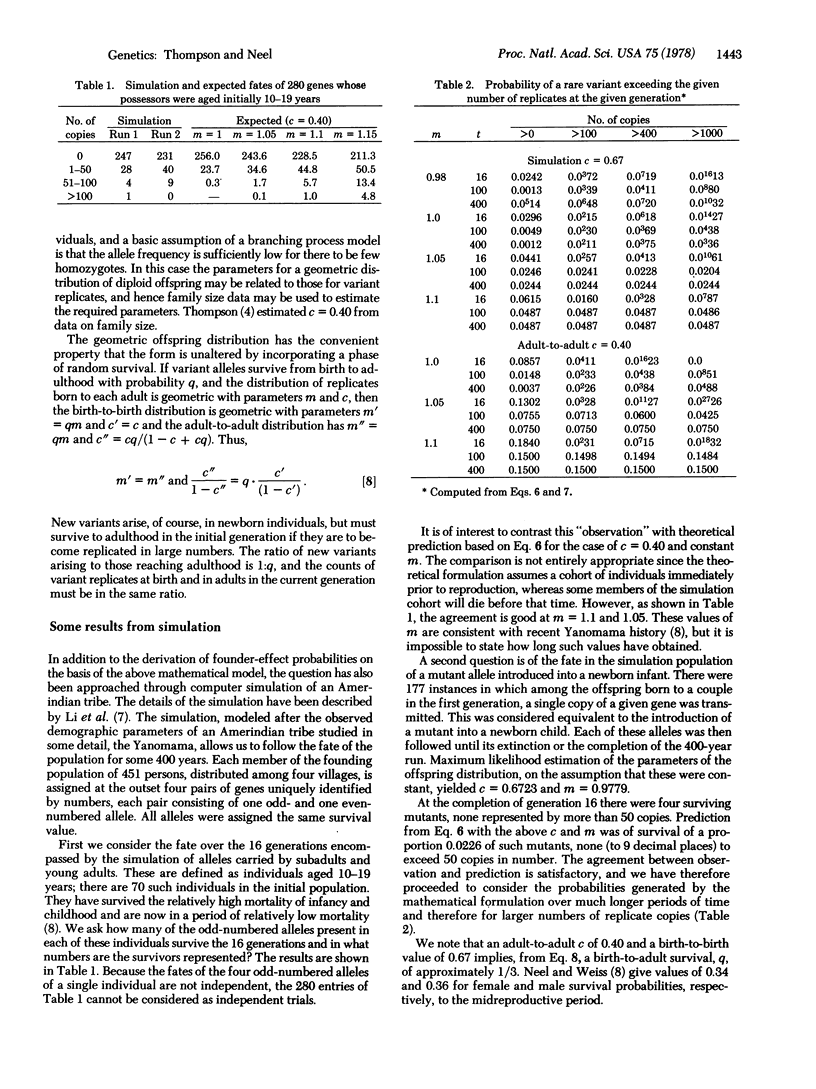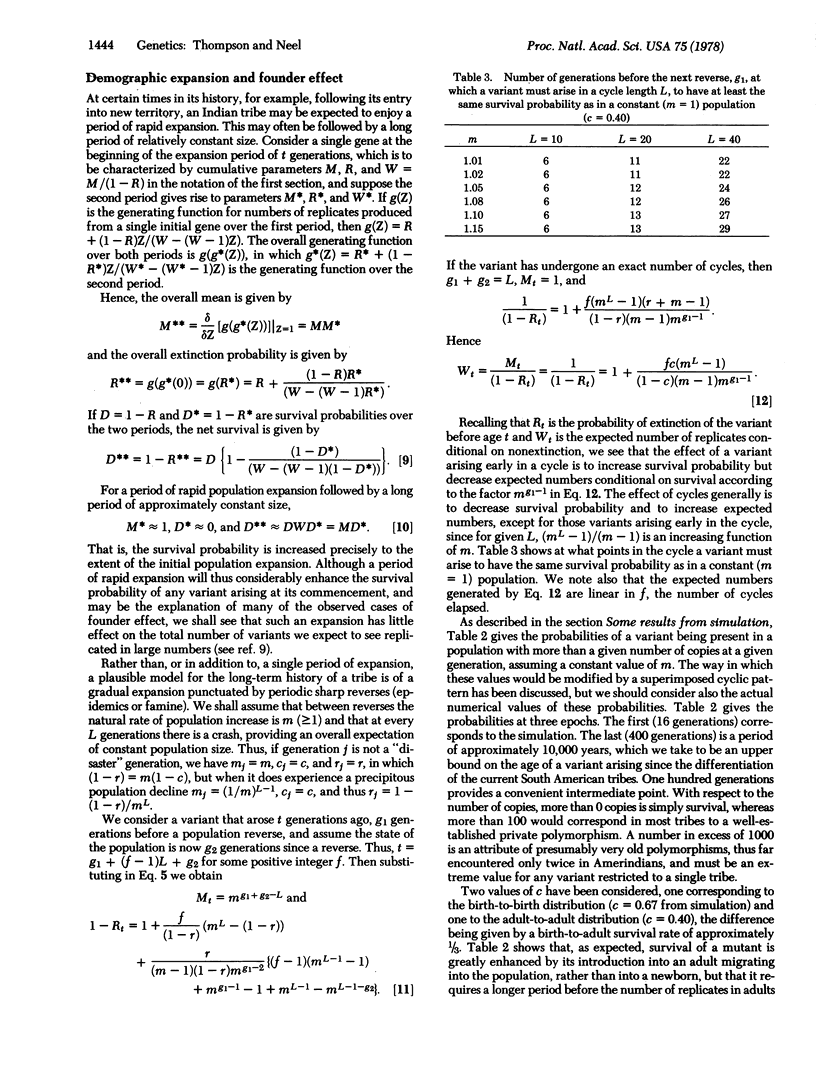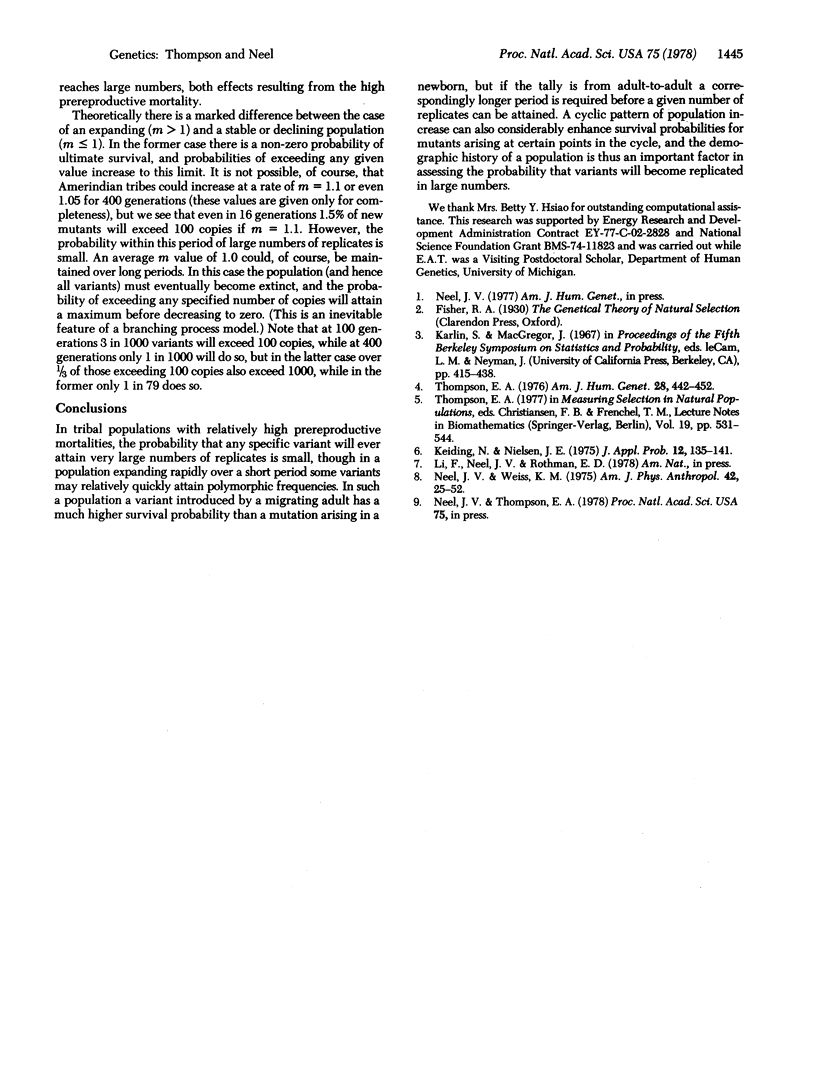Abstract
When an unusually high frequency of an allele is encountered in a population, "founder effect" is often invoked as an explanation. As usually used, the term implies the disproportionate increase through chance (rather than selection) of an allele contributed to the population by a particular ancestor. While genetic theory leaves no doubt this is a possible explanation, problems arise when we try to determine how likely this explanation is for any specific finding in any specific, finite population, i.e., just how rare is this rare event? In this communication we consider the question in the context of Amerindian tribal populations, deriving specific probabilities under defined conditions. Our interest in the question has been whetted by the finding to date of some eight possible examples of a founder effect in studies of twelve different tribes.
Full text
PDF



Selected References
These references are in PubMed. This may not be the complete list of references from this article.
- Neel J. V., Weiss K. M. The genetic structure of a tribal population, the Yanomama Indians. XII. Biodemographic studies. Am J Phys Anthropol. 1975 Jan;42(1):25–51. doi: 10.1002/ajpa.1330420105. [DOI] [PubMed] [Google Scholar]
- Thompson E. A. Estimation of age and rate of increase of rare variants. Am J Hum Genet. 1976 Sep;28(5):442–452. [PMC free article] [PubMed] [Google Scholar]


